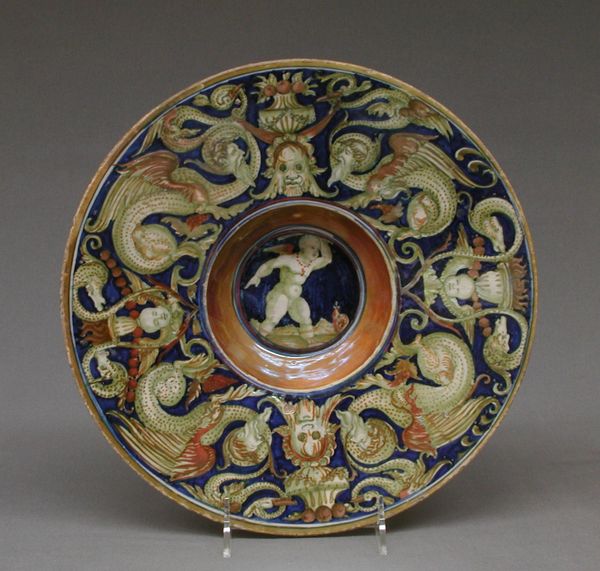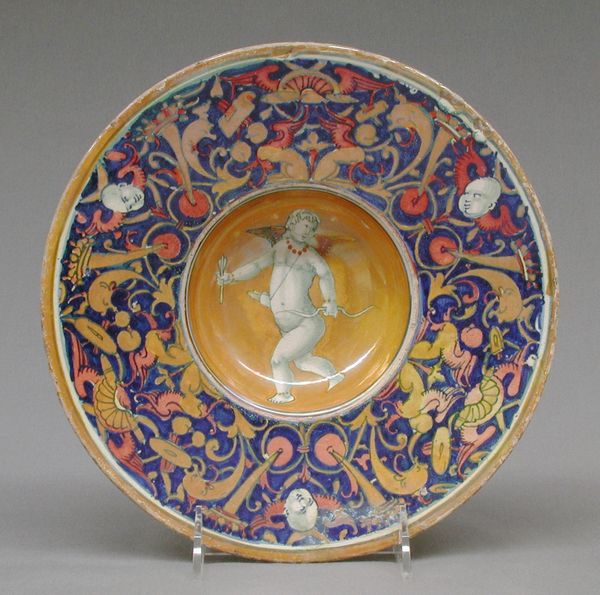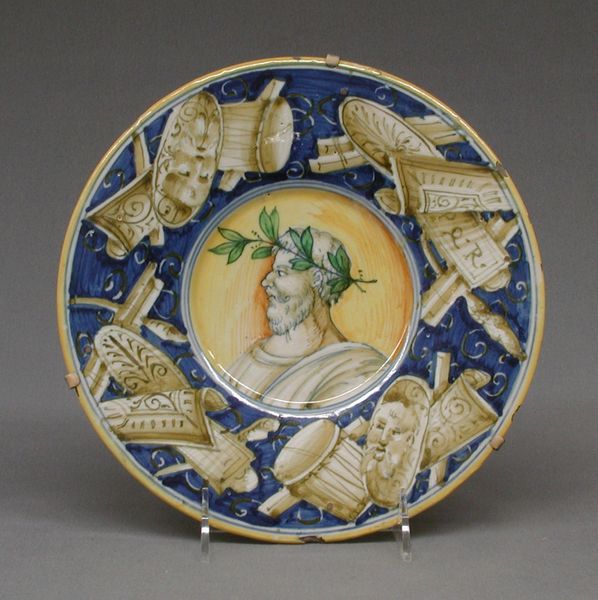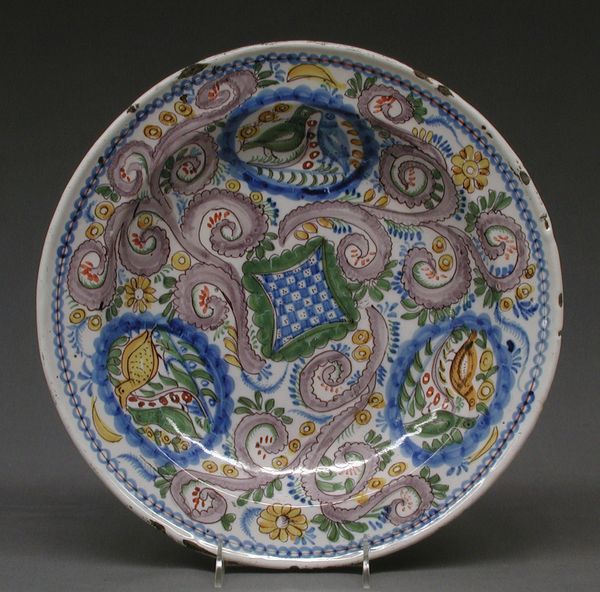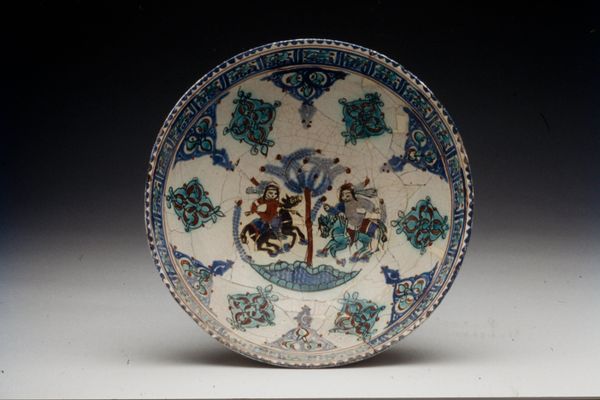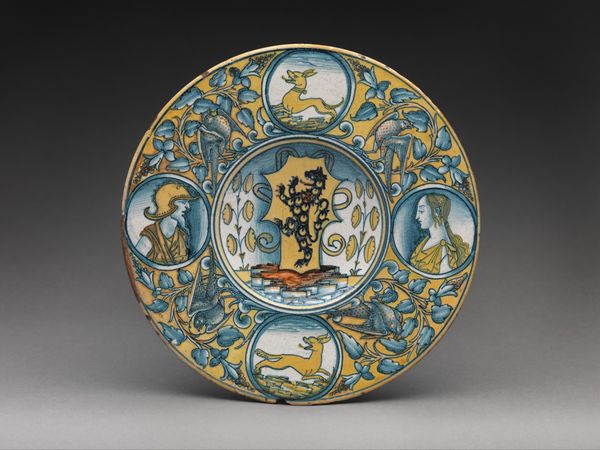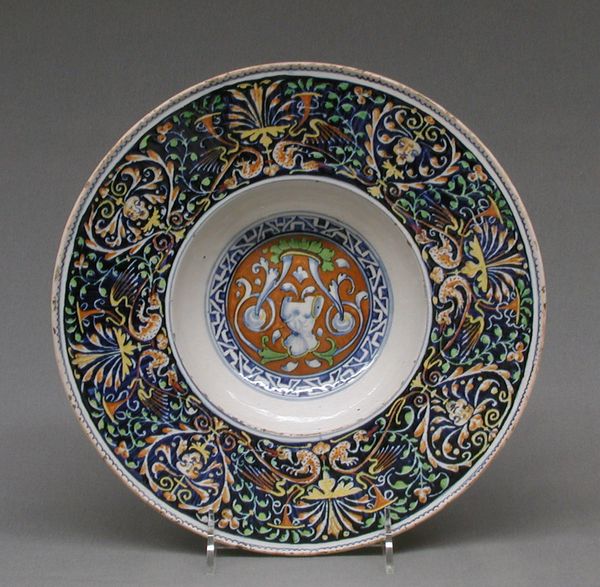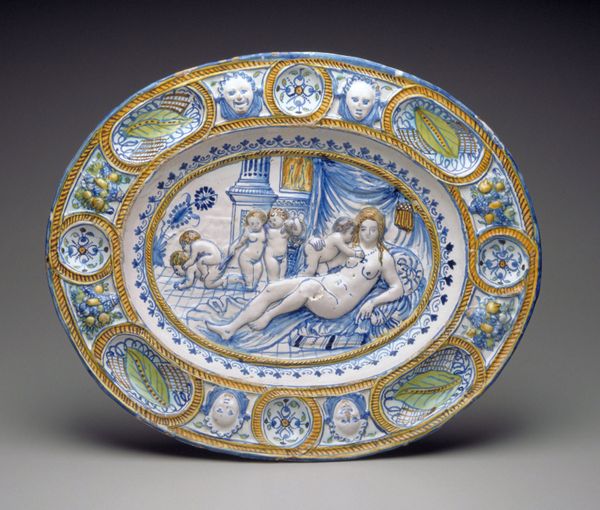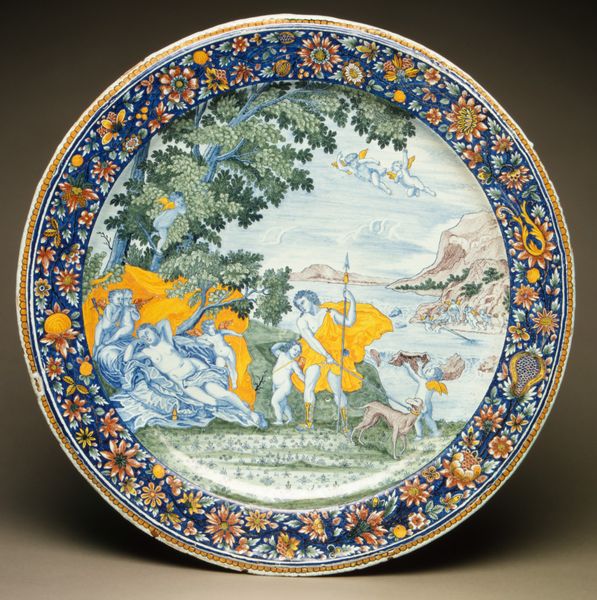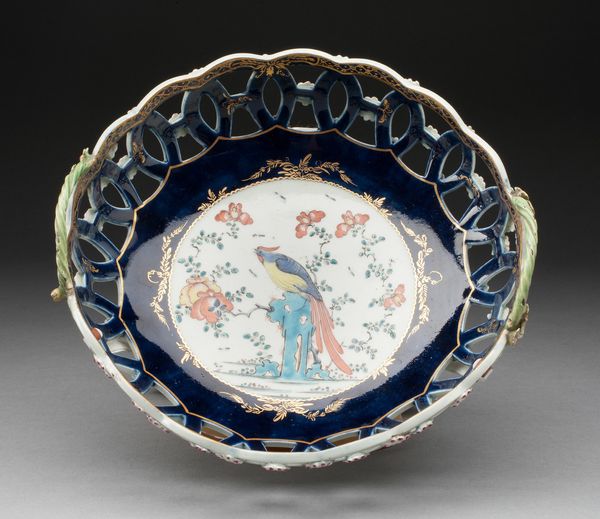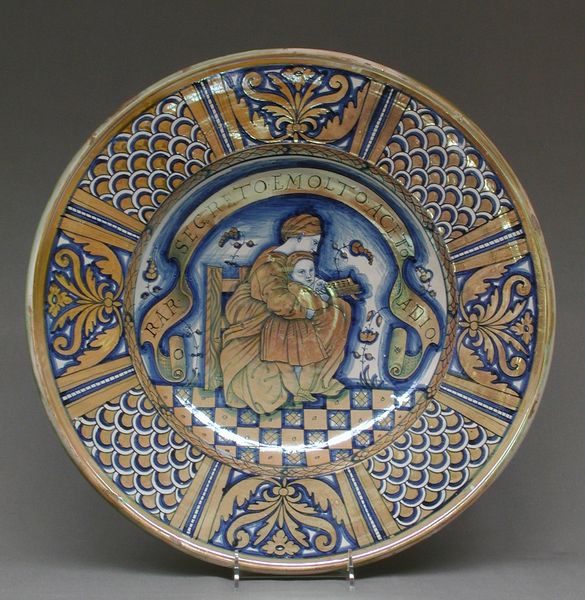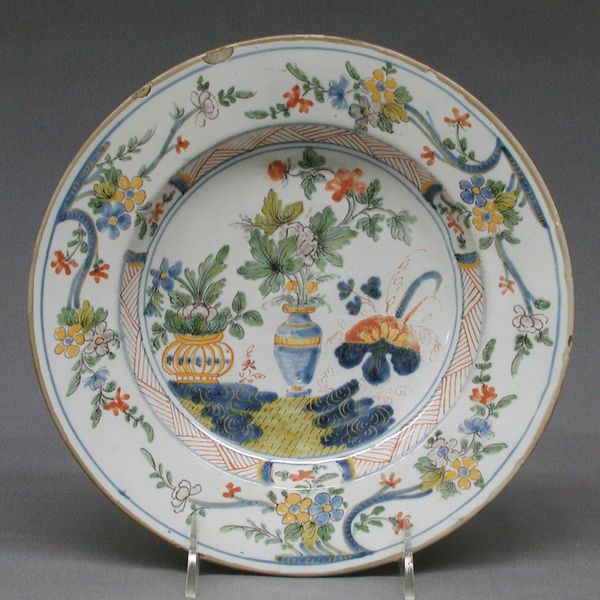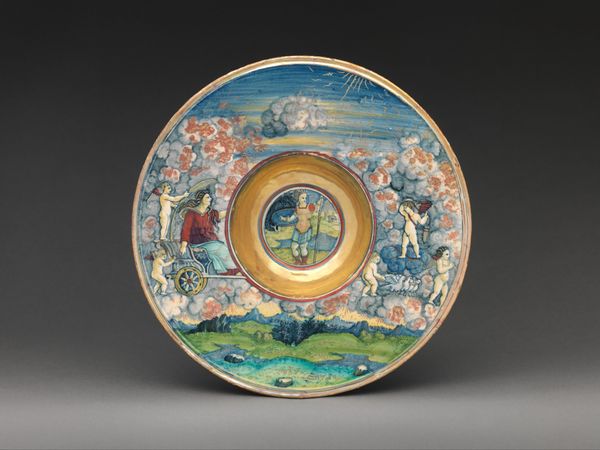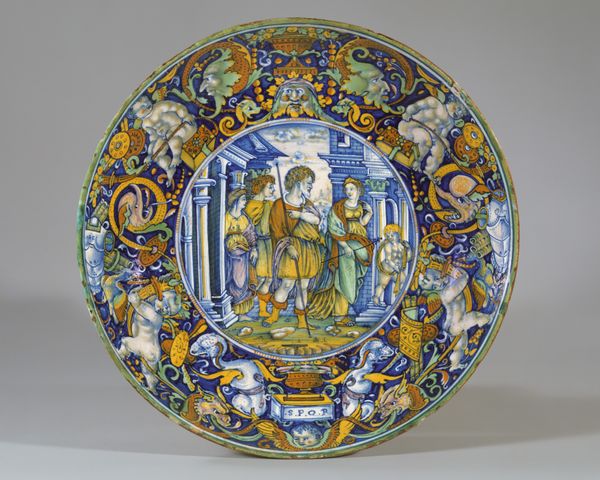
painting, ceramic, sculpture
#
pottery
#
painting
#
ceramic
#
figuration
#
cupid
#
sculpture
#
ceramic
#
history-painting
#
italian-renaissance
#
nude
Dimensions: Overall: 1 3/4 × 10 in. (4.4 × 25.4 cm)
Copyright: Public Domain
Curator: Before us, we have a ceramic plate created in 1532 by Maestro Giorgio Andreoli. The piece resides here at the Metropolitan Museum of Art. Editor: It strikes me immediately as rather playful! The glossy surface and those bright blues are undeniably cheerful, and the central figure, a Cupid, certainly leans into that levity. Curator: Precisely. Andreoli was renowned for his mastery of lustreware, a technique that imparts that unmistakable shimmering iridescence we see here. What’s interesting, though, is to consider the implications of rendering Cupid on functional dishware. It connects to the Renaissance interest in humanist philosophy and in portraying mythical or allegorical images. Editor: It also integrates the artwork seamlessly into daily life, which shifts art away from a precious thing watched in a sacred space, to a piece which encourages a relaxed reflection in a personal space. The radiating designs frame and draw the eye toward that central figure so efficiently. And that figure’s reclining pose introduces a horizontal counterpoint to the overall circular composition. Curator: Exactly, because by placing images of nudes within dining culture, it's an invitation to see parallels between classical virtues and the daily needs of its patrons. Serving food becomes enmeshed in ideals of beauty. Editor: Though a humble ceramic plate, Andreoli managed to turn this vessel into a thoughtful display of Renaissance ideals, formally realized. The colours and motifs create a sense of wholeness within its structural composition. Curator: Indeed. Thinking about this plate prompts conversations about class and about power, about who had the luxury to not only afford art but also to experience commonplace objects in such high refinement. Editor: I appreciate how this visual language speaks volumes. Curator: For me, it underscores how visual culture constantly negotiated a fine line between devotion, classical influence, and, perhaps unsurprisingly, economic capital.
Comments
No comments
Be the first to comment and join the conversation on the ultimate creative platform.
